by Romina Ciulli and Carole Dazzi
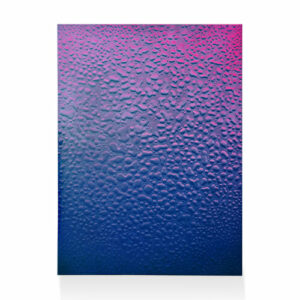
The colour as a means of pictorial experimentations and communicative expressions. The use of atypical materials, including mirrors or sponges, that widen the traditional boundaries of the painting mode. The young italian painter Lorenzo Pace outlines in his works intimate stories, questioning about suggestive and, in return, collective, current issues.
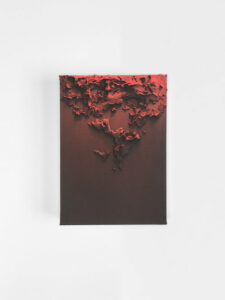
A path that starts from the aerosol art, a pictorial techinique that allows him to deepen his passion for colours and their expressive ways. Subsquently his research is based on painting, and then open up to multidisciplinary mixtures, through the use of innovative techniques and different materials. An intimate and personal style of communication that we can find in all his creations, just as in his projects including Era una cena per due (2015), Reef (2017), or in that one created for Deep Blue (2020). Let’s go deep with the artist.
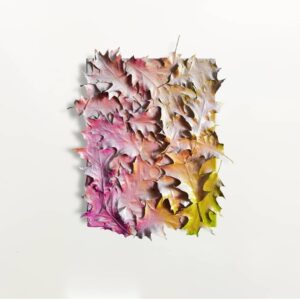
Your approach to the world of art came through painting, realistic in the first phase, but after that it left space to formal and technical experimentation, to the use of different expressive means and supports, daily materials and objects, often unusual, such as sponges, chains, woods, which instill a captivating message, connected to common stories and widespread feelings. From this derive strongly empathetic and communicative representations, within a constantly semantic expanding research. Can you tell us your evolutionary and creative process?
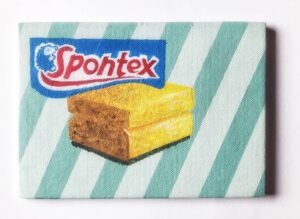
I believe that each work needs its own language and personality in order to communicate the desired message. In fact each of these works has its nature, a precise aesthetic shape. Even if my first approach was painting, the most traditional technique through which we can express ourselves, now I use different means of communication: supports, materials and objects that become protagonists of my artistic vision, but each one has a common central idea. A simple sponge that may seem just a poor daily object, instead for me can became the perfect form of expression to tell a story.
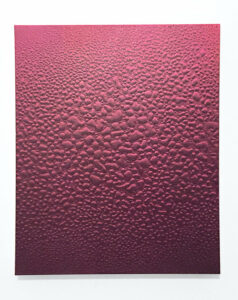
Colour is a fundamental aspect of your work. In fact in your projects you use much vivid, bright hues, but actually they seem to evoke more complicated and introspective emotions. So which is the value of the colour in your artistic procedure?
Generally in all of my projects I use vivid, gaudy and neon colours. At a first look they are cheerful hues, but they paint works full of another meaning, questioning the identity of the work itself. I would never be able to conceive works of art without colour, because I receive an emotion from every shade, a different but positive feeling that is necessary to close my artistic expression.
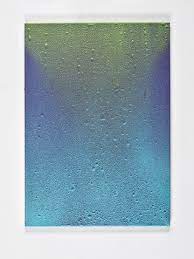
In 2015 you organised your first personal exhibition entitled Era una cena per due: a story of an encounter/clash between a couple of people simbolically arranged during a dinner, and observed through emotions and behaviours that maybe are real, or maybe are just suggested. What is the meaning of this suspended dimension?
In the exhibition two entities were compared: the visual art with the culinary one. Two elements so distant that, when combined, they create a single indissoluble material. The palette where I blend the colours is not different from a cutting board where the chef chops and puts together his ingredients and from which, in the end, an exclusive, unique shape or composition will be born that will overwhelm the user, hitting him with the most various emotions. As a couple during a dinner: they talk while sitting, they compare themselves trying to find the right components for their happiness. Suddenly a chair is overturned: maybe a quarrel has happened, maybe one of them has left. Or all of this did not take place, perhaps it is an unexpected approach. The chemistry is always the key to find the right formula.
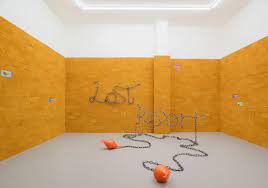
The desire to stimulate the viewer to reflect on questions related to the identity and the reality surrounding him is another aspect emerging from your projects. For example, in your solo exhibit entitled Reef, presented at ADA Gallery of Rome in 2017, you combined painting and installation in order to achieve a figurative dialogue, where the materials become the protagonists of the story itself. Where do you take inspiration from? And, in this particular case, what reflection did you intend to arouse the most in the viewer?
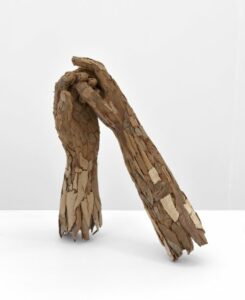
My works aren’t conceived with the aim to report only social themes, but also to make someone think about how some subjects, that appear us far and belonging to a critical and distant reality, are instead part of everyone’s day life. Every artist receives input from the world that surrounds him and for this reason, even a little bit unintentionally, my projects can concern some topics. But the bewilderment, of feeling stuck in a reality that doesn’t belong to us and the desire for a better future are emotions that each of us feels constantly. Therefore my works aspire to make the viewer reflect and empathize, going home with some questions to answer. In that case, the project was a tribute to Aylan Kurdi’s story.
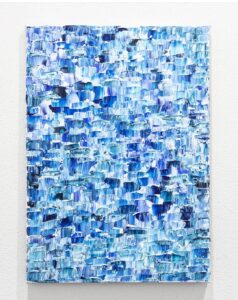
Instead in the Deep Blue project, conceived for the Lefranc Bourgeois Call (2020), you created a series of works where precisely the colour blue represented each time a different meaning and emotion. All these things are expressed through various forms of language, that came out from the traditional borders of the canvas. Can you tell us about this experience?
I was given the opportunity to experiment new languages without limits to my personal research. It is precisely for this that the works exhibited were different among them and ranged from painting, to installation and performance. Each of them told a story, a different emotion that couldn’t be limited to a single support. Even in that case, common objects assumed a whole other meaning and tried to immerse the viewer into strange realities that were closer to them than they thought.
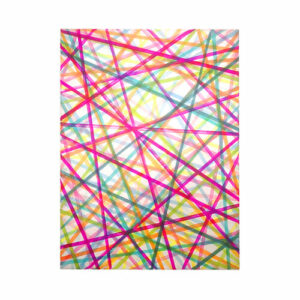
Who are the artists who have inspired your artistic career or by which you are currently inspired?
Definitely in the history up to now, there are artists who I particularly appreciate such as Max Ernst for his visionary painting and Jannis Kounellis for his artistic ability to synthesize. So I would talk more of appreciation because every artist should take inspiration from his own experience and from what surrounds him more than being inspired by something already done.
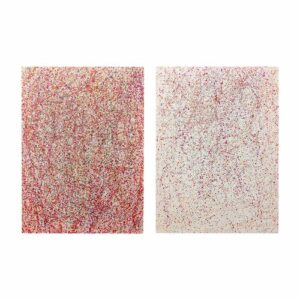
Can you tell us about your future projects?
I constantly research and experiment. I’m working on new techniques for new projects for an exhibition that will take place next year.
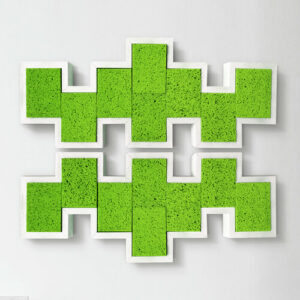
Biography: Lorenzo Pace is born in Rome in 1984 where he still lives and works. He has always materialized his ideas through paper and color, as an outlet for the dissatisfaction of not seeing fantasies and thoughts realized. The study of color and the use of different supports are the basis of his research. Pace is interested in all those materials that absorb, retain, capture what they come into contact with, such as sponges, which he uses as if they were urban walls.